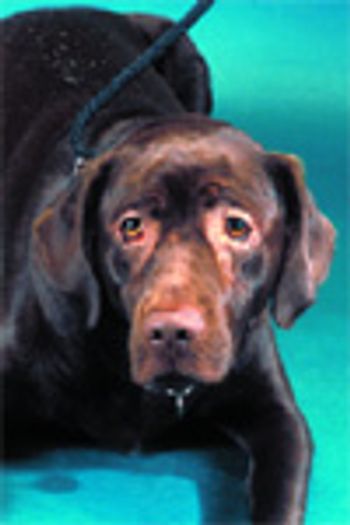
Most practitioners recognize that some dogs and cats with pruritus or gastrointestinal conditions can be managed either in part or fully by feeding a limited-antigen diet.

Most practitioners recognize that some dogs and cats with pruritus or gastrointestinal conditions can be managed either in part or fully by feeding a limited-antigen diet.

The treatment method for corns is as debatable as their etiology. Many techniques have been described. All of these treatment options have varying degrees of success.
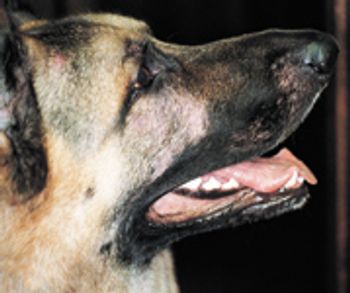
The immune system plays a role in the development of juvenile- and adult-onset demodicosis.

Your veterinarian has determined that your dog has allergies to certain substances, such as house dust mites and various grasses and insects, and may benefit from allergen injections to slowly lessen your pet's reaction to the substances. You can easily administer these injections at home.
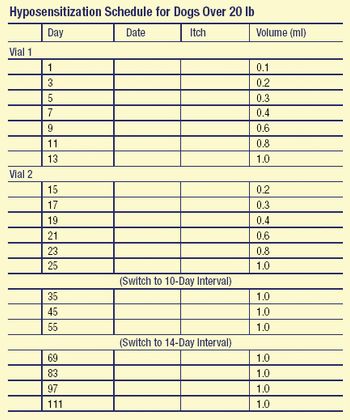
In this article, I review the efficacy of immunotherapy for treating atopic dermatitis, help you ease your clients' nerves about administering the injections, and show you how to easily adapt the administration protocol based on a patient's responses to the injections.

It seems that pinnal inflammation is much easier to treat than canal inflammation.
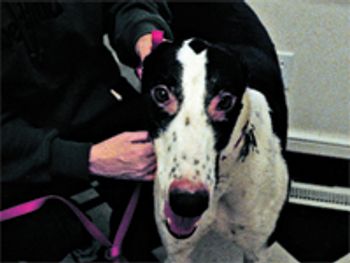
In our practice we actually see more cases of Cheyletiella mites "walking dandruff" than fleas!
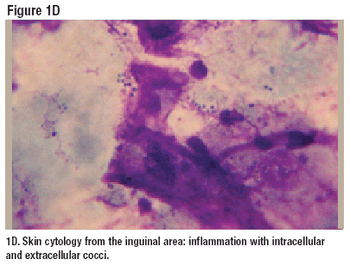
Triamcinolone topical solution is an effective and safe alternative to systemically administered corticosteroids.
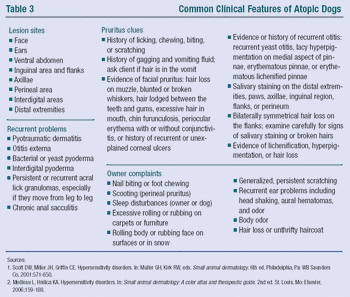
In the simplest terms, allergic dermatitis refers to any inflammatory skin disease caused by any type of allergy. The unifying characteristic of these diseases is that they cause pruritus and subsequent inflammation. Depending on the etiology, the event may be short-lived or become a lifelong condition. Table 1 lists the reported allergic diseases of small animals. 1,2 These diseases are rarely uncomplicated and often involve secondary infections. Furthermore, more than one core allergic disease is often present concurrently. These factors can make diagnosis and management of allergic dermatitis cases challenging.
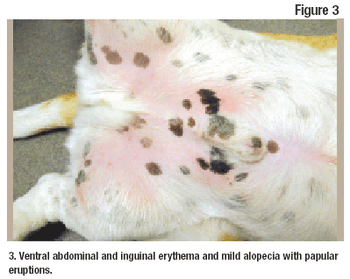
Topical therapy is an important - and in many cases essential - component of successfully managing allergic dermatitis in dogs. When used as an adjunctive treatment for generalized disease, topical therapy often minimizes dependence on systemic medications that may be deleterious to the patient's health. In addition, topical therapy may be more effective in treating localized or regionalized pruritus.
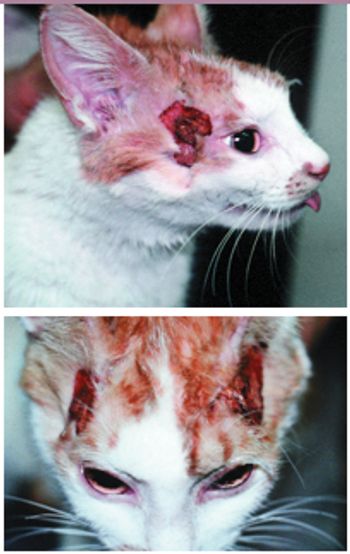
We are just now determining the best concentration levels to run a skin test for food-storage mites.

If you need help microscopically identifying fungal colonies, visit www.doctorfungus.org.

Recurrent pyodermas are a frustrating skin problem in veterinary patients. The key to treating them is to identify the underlying cause. But first you must discern whether the pyoderma is truly recurrent or is simply relapsing.
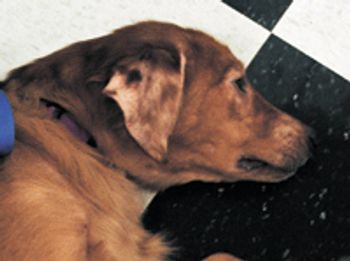
Most clients don't realize that dust mites are found in bedding, carpet, upholstery and mattresses — not in furnace ducts.

Many conditions can cause pruritus in dogs and cats, the most common being allergies (atopy, food, flea) and external parasites (e.g. Sarcoptes scabiei, Cheyletiella species).

When trying to diagnose demodectic mange, try plucking the hairs around lesions in addition to scraping the skin.

A 9-year-old castrated male Persian cat was referred with a four-month history of non-pruritic crusting and alopecia involving the face and abdomen.
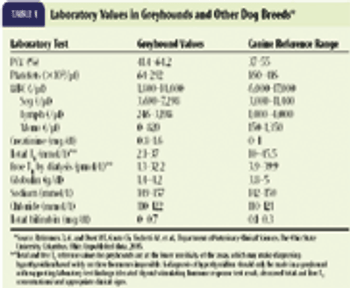
Over thousands of years, greyhounds have been bred and selected for speed. This selective breeding may explain a number of the idiosyncrasies we see in the breed today. Retired racing greyhounds are becoming more common pets and more common patients in veterinary hospitals. It is estimated that about 18,000 greyhounds are placed into homes as pets annually. This article will familiarize practitioners with some idiosyncrasies in greyhounds that can affect their medical care.

MINNEAPOLIS- 8/1/05 - Five veterinarians won a trip to the George H. Muller Veterinary Dermatology Seminar in Hawaii this November for their written and photo submissions of dermatological cases in the practice setting.
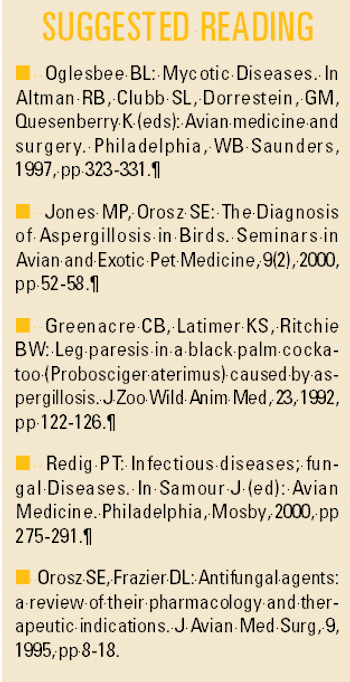
Fungi are commonplace in the environment and some are even considered normal inhabitants of the skin, gastrointestinal tract and other mucous membrane surfaces. In most situations, healthy birds can ward off infection if their immune systems are intact and fully operational. In other cases, however, the immune system may be compromised leading to the development of serious infections. Paramount to properly managing fungal infections in avian species is the ability to recognize infection early in the course of disease, to administer appropriate antifungal medications for the location and severity of infection, and to continually assess a patient's response to therapy. The scope of this article is to provide a brief overview of several fungal diseases in companion avian species.
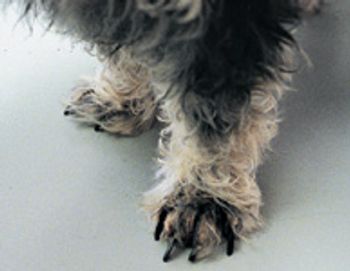
Since a deep secondary pyoderma is usually present, a culture and sensitivity is usually performed.
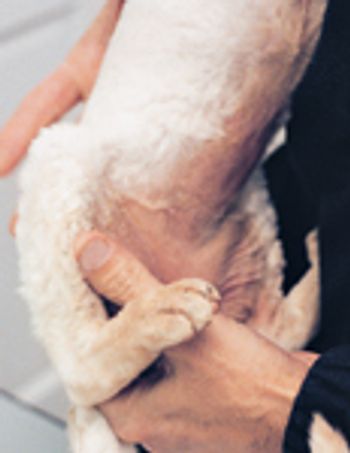
Some cats with food-storage mite allergy present with facial excoriation and recurrent otitis.
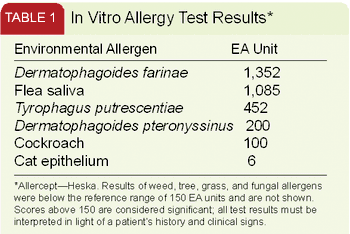
A 2-year-old intact male Siamese cat was presented to the University of Wisconsin School of Veterinary Medicine's Dermatology Service for evaluation of self-mutilation and psychogenic licking of the forelimbs and abdomen.

In a recent study, oral dextromethorphan hydrobromide was evaluated in 14 dogs with atopic dermatitis to determine whether the drug had any effect on repetitive behaviors associated with or suggestive of pruritus.
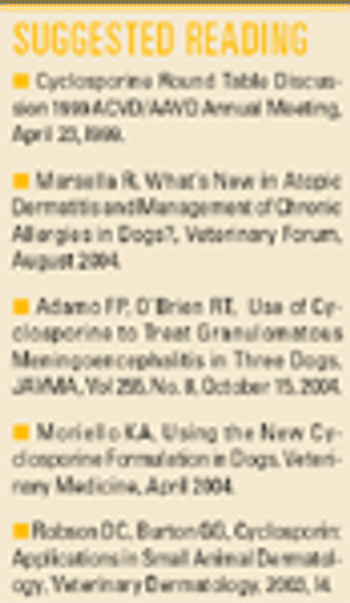
Immunotherapy is still the therapy of choice for long-term treatment of atopy.